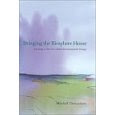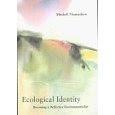When I visit college campuses or educational conferences, I often give a talk on "The Nine Elements of a Sustainable Campus."
I recently finished an essay on that topic. Over the next few weeks I will post the essay as blog entries. The first section explains how my original inspiration for this came from The Whole Earth Catalog.
From the Whole Earth Catalog to a Sustainable Campus
Forty years ago, in the late 1960’s, I was a college student in New York City. Every Friday afternoon I would hop on the subway, get off at Bleecker Street, and wander through the record stores and bookshops. It was an exciting time to be a student given the profound social, cultural, and political changes. Every week there would be new books, magazines or records in the shops and I wanted to read and listen to all of them.
One day I spotted an unusual, oversized paperback book with a stunning picture of the earth on the cover. Laced across the top in a familiar 60’s San Francisco style font was the title: The Whole Earth Catalog. I flipped through the pages and glanced at the sections—whole systems, natural history, land use, community, learning, tools—and each page was organized like the “things to do” books I used to play with as a kid. The catalog recommended books to read, maps to peruse, ideas to consider, and tools of all kinds. Implicit throughout the text was a message of sustainability posed as a challenge for an impending era of ecological limits. For many years and through many editions I did the best I could to track down the various resources in the Whole Earth Catalog. It became my most treasured reading list and guide.
In retrospect The Whole Earth Catalog served as a visionary inspiration for living a sustainable life. It provided an enduring, resilient, community-based, do-it-yourself, hands-on guide for living and learning. Forty years later, I realize that my entire career path is a response to that challenge. Now as a college president this is the educational philosophy that continues to guide me. Sustainability is not just a LEED certified building or providing more local foods in the cafeteria. It is a powerful philosophy of life, derived from ecological principles, common sense, and a respect for the complex magnificence of our remarkable planet.
Sustainability as a “way of life” has a long tradition in American higher education. Whether its Thoreau’s musings and experiments, Helen and Scott Nearing’s homesteading, Lewis Mumford’s vision of ecological cities and technology, or the countless attempts to link character, community, and ecological living (see David Shi’s pertinent history The Simple Life), the Whole Earth catalog served to coalesce and revitalize a perennial philosophy.
Forty year later, the ecological stakes are much, much higher. It’s crucial to understand that sustainability is a response to a planetary emergency. We are in the early stages of the sixth megaextinction (a catastrophic loss of species), plunging declines in biodiversity, and a rapidly destabilizing climatic/oceanic circulation.
This response poses an immediate challenge for all educators. How do we teach sustainability as a way of life? Make no mistake—this is the single biggest challenge for higher education—ultimately connected to turbulent economic times, the accessibility and affordability of schooling, and how we think about the future of the planet. Our goal should be nothing less than to train a new generation of sustainability leadership, graduates who understand the intricate connections between economics and ecology, place and planet, how we live and the consequences of our actions.
As a means for meeting this challenge, and as a guide for both curricular and institutional transformation, I propose nine elements of a sustainable campus, designed to evoke a whole new twenty-first century catalog of transformational sustainable practices. These entail three broad categories—Infrastructure (Energy, Materials, and Food), Community (Governance, Investment, and Wellness), and Learning (Curriculum, Interpretation, and Aesthetics). Imagine these categories as dynamic, unfolding, emergent, and intrinsically interconnected. Any sustainable practice may involve multiple categories. For example, a sparkly and ecologically efficient Platinum-LEED building may reduce the carbon footprint of a campus, but if it doesn’t also serve an inspirational curricular or interpretive function, it may not achieve its full educational potential. These nine elements aren’t a checklist, nor are they criteria for measuring success. They are meant to evoke the necessity of envisioning and applying sustainable practices to all aspects of campus life.
A sustainable campus requires a balance between protocols, behaviors, habits and routines, along with creativity, deliberation, and reflection. We need peer-reviewed protocols such as those developed by the ACUPCC (American College and University Presidents Climate Commitment) so we have a common agreement as to appropriate standards. Such protocols serve as the basis for supporting sustainable daily life practices, from energy conservation to growing local foods. The subsequent behaviors must also be the subject of deliberation. Why exactly are we doing this and what do we hope to accomplish?
At Unity College in Maine, we aspire that our campus becomes an exemplary learning and living laboratory for a sustainable culture. We hope that people who visit our campus (students, parents, community members, donors) will get dozens of ideas that will in turn inspire their own practices. We feel that if we can do this in rural Maine where the winters are very long, at a college that is undeniably “resource strapped” we can set an example for any campus anywhere. Like many other excellent colleges that share similar aspirations, we are learning how to do this, and many hours of effort and intention separate our aspirations from our accomplishments. We are collaborators and learners. Just because Unity College has an environmental mission, it doesn’t mean that we lack controversies, contradictions, and countervailing influences. Sometimes we slip into self-righteousness in our efforts to be virtuous. That’s why a healthy dose of humor is always required. As the poet Jim Dodge writes, purity is the end of potential!
As a college president, these nine elements are the source of my motivation and ambition. They reflect how I attempt to apply what I learned from the Whole Earth Catalog. This is way more than a career challenge. It’s deeply rooted in a search for meaning and purpose, a values-based orientation, and a commitment to fulfilling my responsibility as a planetary citizen.
Friday, July 10, 2009
Subscribe to:
Post Comments (Atom)





1 comment:
I'm a high school teacher in California, and am so inspired by your mission. I'm frustrated with the college preparatory system being confined to academic standards, exit and standardized exams. I'm wondering if sustainability could be incorporated into all content areas, thus becoming part of these standards.
Post a Comment